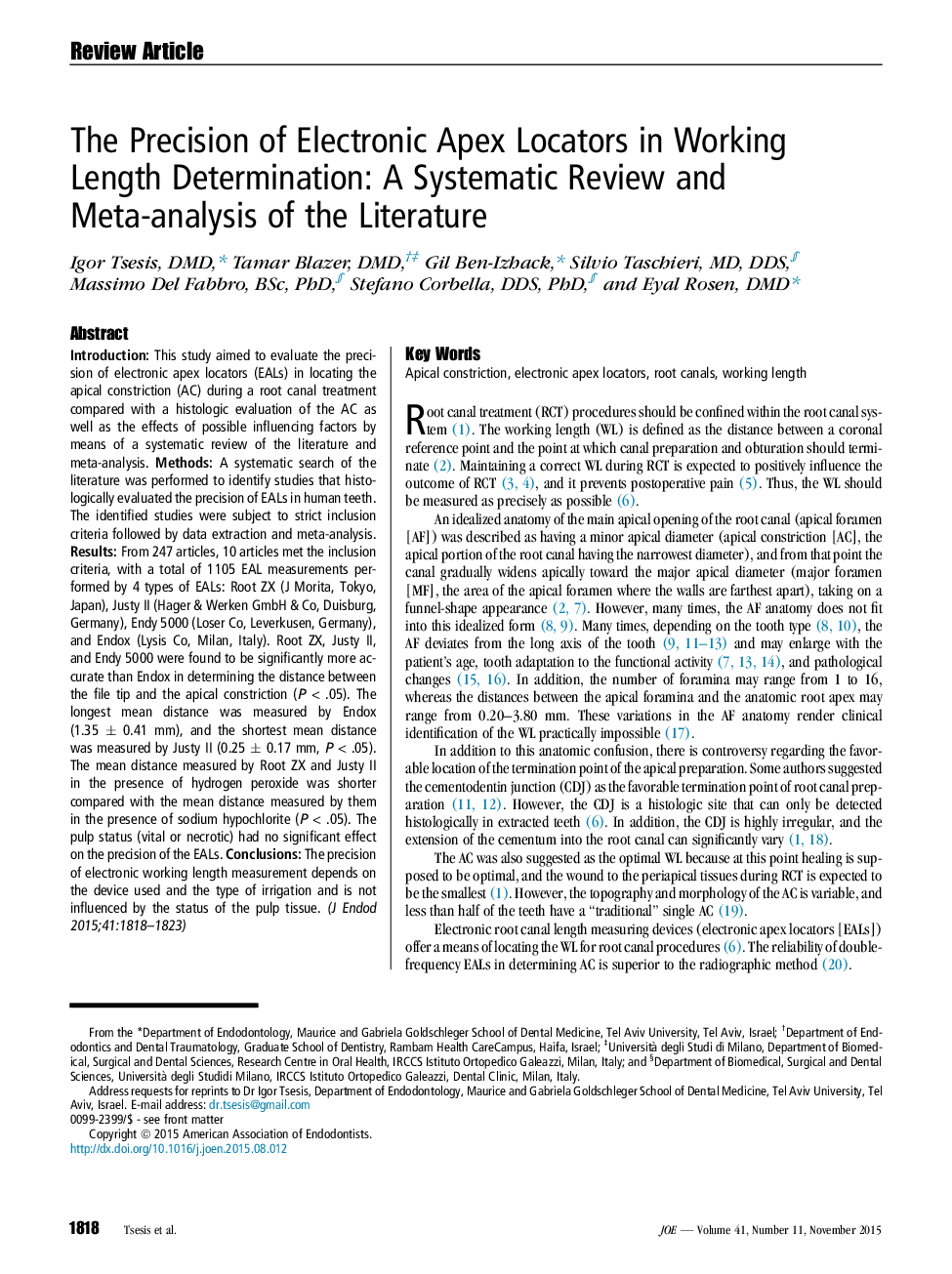| Article ID | Journal | Published Year | Pages | File Type |
|---|---|---|---|---|
| 3146550 | Journal of Endodontics | 2015 | 6 Pages |
IntroductionThis study aimed to evaluate the precision of electronic apex locators (EALs) in locating the apical constriction (AC) during a root canal treatment compared with a histologic evaluation of the AC as well as the effects of possible influencing factors by means of a systematic review of the literature and meta-analysis.MethodsA systematic search of the literature was performed to identify studies that histologically evaluated the precision of EALs in human teeth. The identified studies were subject to strict inclusion criteria followed by data extraction and meta-analysis.ResultsFrom 247 articles, 10 articles met the inclusion criteria, with a total of 1105 EAL measurements performed by 4 types of EALs: Root ZX (J Morita, Tokyo, Japan), Justy II (Hager & Werken GmbH & Co, Duisburg, Germany), Endy 5000 (Loser Co, Leverkusen, Germany), and Endox (Lysis Co, Milan, Italy). Root ZX, Justy II, and Endy 5000 were found to be significantly more accurate than Endox in determining the distance between the file tip and the apical constriction (P < .05). The longest mean distance was measured by Endox (1.35 ± 0.41 mm), and the shortest mean distance was measured by Justy II (0.25 ± 0.17 mm, P < .05). The mean distance measured by Root ZX and Justy II in the presence of hydrogen peroxide was shorter compared with the mean distance measured by them in the presence of sodium hypochlorite (P < .05). The pulp status (vital or necrotic) had no significant effect on the precision of the EALs.ConclusionsThe precision of electronic working length measurement depends on the device used and the type of irrigation and is not influenced by the status of the pulp tissue.
